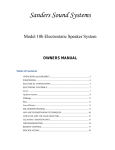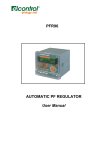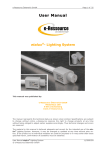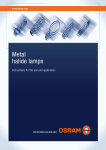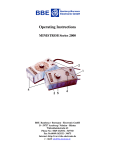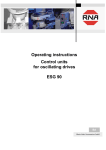Download Sanders Sound Systems Electrostatic Amplifier Specifications
Transcript
Sanders Sound Systems Electrostatic Amplifier OWNERS MANUAL ............................................................................................................................................................................. Table of Contents Use left mouse button to go to location in manual INSTALLATION ........................................................................................................................................................................... 3 LOCATION.................................................................................................................................................................... 3 INPUT CONNECTIONS ............................................................................................................................................ 3 OUTPUT CONNECTIONS ........................................................................................................................................ 3 POWER CONNECTIONS .......................................................................................................................................... 3 ELECTRICAL PROTECTION AND FUSES .......................................................................................................... 3 OPERATION ................................................................................................................................................................................. 4 OUTPUT FUSE REPLACEMENT ........................................................................................................................... 4 LINE FUSE AND VOLTAGE SELECTOR................................................................................................................................. 5 DESIGN PHILOSOPHY ............................................................................................................................................................... 7 BACKGROUND............................................................................................................................................................ 7 PROBLEMS and SOLUTIONS ................................................................................................................................. 7 Current limitations ................................................................................................................................................... 7 Voltage limitations.................................................................................................................................................... 8 Protective circuitry................................................................................................................................................... 8 Power............................................................................................................................................................................. 8 Efficiency ...................................................................................................................................................................... 9 Stability ......................................................................................................................................................................... 9 Size and Weight ......................................................................................................................................................... 9 DESCRIPTION .......................................................................................................................................................... 10 SPECIFICATIONS .................................................................................................................................................... 11 Rated Power ............................................................................................................................................................. 11 Bandwidth ................................................................................................................................................................ 11 Distortion .................................................................................................................................................................. 11 Gain.............................................................................................................................................................................. 11 Slew Rate ................................................................................................................................................................... 11 Input Impedance .................................................................................................................................................... 11 Noise ........................................................................................................................................................................... 11 Output impedance ................................................................................................................................................. 11 Dimensions............................................................................................................................................................... 11 Weight ........................................................................................................................................................................ 11 INSTALLATION LOCATION To provide for adequate ventilation, you should allow at least two inches of unobstructed space above and a couple of inches on each side of the amplifier. Because of its large power supply, the amplifier produces a small local magnetic field that may be picked up by low-level circuitry such as preamplifiers, turntables, and the like. For this reason, you should also provide at least four inches of space between the amplifier and these low-level components. INPUT CONNECTIONS Signal input is made through two rhodiumplated RCA (unbalanced) or two XLR (balanced) type connectors. Use one or the other. Do not use both RCA and XLR connectors at the same time as they will load each other improperly. OUTPUT CONNECTIONS ELECTRICAL PROTECTION AND FUSES Although not essential, it is a good idea to use a surge protector to prevent damage to the amplifier in the event of an electrical storm or other causes of abnormally high mains voltage. These are inexpensive and can be obtained from any hardware store. You do not need to use an expensive line conditioner, but if you do, these normally will have surge protection built-in so you do not need to use additional surge protection. The amplifier has two status lights on the front panel. These indicate that the left and right channels are getting power. If the power switch is "on" and either or both lights go out, it indicates that their respective channel has a problem. Back to TOC The output to your speakers is made through heavy-duty, gold-plated, five-way binding posts. Be sure of the correct speaker phasing by connecting the speaker cables to the same color posts for each channel. Check and double-check that the speaker terminals are not shorted together by any loose strands of wire. Check at both the amplifier and speaker connections. Shorting the output terminals together will blow the output fuses and can damage the amplifier. POWER CONNECTIONS Be certain all associated equipment is turned off before making any connections. Insert the power cord into the AC LINE INPUT on the back panel and then connect it to an appropriate power source. This is a powerful amplifier. If you use a power conditioner or generator, it must be able to deliver at least 1800 watts of power to the amplifier. Page 3 OPERATION THE ESL AMPLIFIER IS DESIGNED TO BE LEFT "ON" CONTINUALLY. It is extremely efficient. It only draws six watts at idle (less than most preamps), so feels cool and does not waste electricity. Although there is a power switch on the back panel, the amplifier is designed to be left on continually. Electronics last longer when they are left on, as repeatedly switching them on and off is stressful to them. You can expect an indefinite life-span if you just leave it on. Check that the cables are properly phased (that the cables are connected to the red and black terminals on the speakers and amplifier identically for both channels). Out-of-phase connections will result in an image that is diffuse and directionless rather than having pin-point precision. Some preamplifiers produce large turn-on and turn-off DC voltages, which you will hear as a “thump.” If your preamplifier does this, be aware that these surges probably will briefly drive the amplifier to full output. When an amplifier has as much power as the ESL Amp, such voltage surges can damage speakers and/or blow fuses. Well-designed preamps won't do this, but it is surprising how many expensive preamplifiers have this problem. To avoid such problems, turn on your preamplifier first. Within five seconds, solid state preamplifiers will have stabilized so you can safely turn on the ESL amplifier. If your preamplifier uses vacuum tubes, you should wait a full minute before turning on the amplifier. OUTPUT FUSE REPLACEMENT The amplifier has an 8-amp, fast-blow, output fuse for each channel. These are located on the back panel near the red speaker binding posts. The amplifier will deliver over 600 watts/channel on music when using these fuses. If you have relatively delicate speakers, you may wish to replace these fuses with 2 amp, fast-blow fuses to protect your tweeters. These fuses are American AGC types, which are standard fuses that measure 1/4" diameter by 1-1/4" long. Two spare fuses are supplied with the amplifier. If you should blow a fuse, you may access the fuse by pressing firmly inward on the cap and turning it 1/4 turn counter-clockwise (bayonet type). The cap will then spring out and can be removed, the fuse replaced, and the cap reinstalled. You should never blow a fuse. If this occurs, you should find the problem and correct it. Note that by far the most common cause of blown fuses is changing speaker cables while leaving the amplifier on. It is hard to avoid touching the two cable ends together when changing cables, and shorting the cables will usually blow the fuse. So always turn the amplifier off and wait 30 seconds for the capacitors to discharge before changing cables. Back to TOC When turning off the system, turn off the amplifier first, wait about a half minute for the power supply capacitors to mostly discharge, then turn off the preamplifier. An excellent way to avoid this cumbersome start-up and turn-off procedure is to always leave your preamplifier and amplifier on. Page 4 LINE FUSE AND VOLTAGE SELECTOR There are a pair of line fuses inside the fuse drawer that is located on the back of the amplifier. This drawer also has a window in it that shows the mains voltage that the amplifier uses. mains voltage in your location. If your mains voltage is 230, use 240 volts on the star. Orient the star so that your voltage will face outward from the amplifier and show through the window in the drawer, then push it back into the amplifier. You can now slide the drawer back into place and press firmly against its spring until it is flush and the latch "snaps" and holds the drawer in place. To change the fuses or the mains voltage you must open the drawer. The drawer is spring loaded and will pop out if you release the latch that holds it. To release the latch, you will need a small tool such as a small screwdriver or ball point pen. Put the tool in the notch as shown in the drawing, and push the latch towards the voltage window. The drawer will release and you can gently grasp it and pull it out of the amplifier. With the drawer in your hand, you will see the fuses. You can simply pull them out of their spring clips and replace them. A fuse blows to protect the amplifier for a reason. You should identify the cause and correct it before replacing the fuses. Back to TOC The correct fuse size is 5mm x 20mm. For 200 volt circuits, a 5 amp, slow-blow type should be used. For 100 volt circuits, a 10 amp, slow-blow type should be used. The mains voltage can be selected so that the amplifier can be used anywhere in the world. To do so, remove the fuse drawer and look inside where the drawer fits. You will see a white plastic "star" that shows the voltage on it. Remove this star by pulling it straight out of the amplifier. You can do this by putting your little finger or a ball point pen or small screwdriver into the recess on the left side of the star and pulling it out. With the star in your hand, you will see that it has four sides and each side has a different voltage printed on it. These are 100, 120, 220, and 240. Pick the one that best matches the Page 5 CARE AND CLEANING If you wish to clean your amplifier, use a diluted ammonia-based cleaner. Window cleaners like “Windex” also work well. Do not use any abrasive cleaners or chemical solvents like “Ajax”, acetone, or paint thinners. Use particular care not to damage the aluminum faceplate. Aluminum is a medium harness metal and although it is anodized, it can be easily scratched by the careless use of tools during installation. The amplifier may overheat and the finish may fade if exposed to direct, unfiltered sunlight or intense heat for prolonged periods. Save your box and packing materials. They will be very helpful for moving or if you need to ship the unit for servicing by the factory. Back to TOC Page 6 DESIGN PHILOSOPHY Conventional amplifiers have serious problems when forced to drive electrostatic loudspeakers. Roger Sanders has developed the first amplifier specifically designed to drive these unusual speakers: BACKGROUND Electrostatic loudspeakers (ESLs) are very different from conventional magnetic speakers and place unusual and difficult demands on the way amplifiers deliver power to them. A magnetic speaker presents a resistive/inductive load to an amplifier, while an ESL appears mostly as a capacitor. Resistors dissipate power as heat. So the voice coils of magnetic speakers get hot as they use up the current the amplifier sends to them. A capacitor stores an amplifier's electrical energy instead of dissipating it as heat. Therefore an ESL doesn't actually “use” power like magnetic speakers. ESLs are sometimes called “wattless” speakers because of this. But their behavior is highly reactive, which means that they send the electrical current back to the amplifier when the musical signal reverses polarity. Amplifiers tend to be unstable with reactive loads. A watt is a measurement of power. It is the product of volts times amps. Volts is a measurement of the pressure or “push” behind the electrons flowing along a conductor. Amps (a short form of “ampere”) is a measurement of the flow of electrons along a conductor. Amplifier power is measured in watts, which is fine when working with magnetic speakers. But an ESL doesn't operate on watts, it operates on voltage. Therefore, an amplifier's wattage rating can be very deceptive when evaluating its ability to drive an ESL. To take an extreme example, let's look at two amplifiers, both rated at 100 watts. One has a 10 volt power supply that delivers 10 amps of current. The other produces 100 volts at 1 amp. Although both amplifiers generate 100 watts, the one with the higher voltage will drive an ESL to much louder levels than will the low voltage one. Resistance in AC (alternating current) circuits is called impedance, because it often varies with frequency. The impedance of a magnetic speaker will be essentially constant. In a capacitor, the impedance is inversely proportional to frequency. So an ESL will have a high impedance at low frequencies, and a very low impedance at high frequencies — typically 2Ω or lower. PROBLEMS and SOLUTIONS Current limitations An amplifier must deliver more current as the impedance of the speaker decreases. This requires a larger power supply and output devices that can pass large amounts of current. Such parts are costly, so modestly-priced amplifiers are only designed to drive relatively high impedance loads — like 8Ω speakers. Better amps use superior parts and can handle 4Ω loads. But few of even the best amplifiers can handle the very low impedance 2Ω loads of an ESL well. Many otherwise fine amplifiers find themselves unable to pass sufficient current through their output stages to drive an ESL at high frequencies. This is known as “current clipping”, and results in poor high frequency performance. The Electrostatic Amplifier (“ESL amplifier”) solves this problem by using a massive output stage. Each output transistor is capable of delivering 250 watts — and there are eighteen of these per channel. As a result, it can deliver a staggering 135 amps of current with a combined power rating of 4500 watts per channel! The output impedance of an amplifier must be lower than the impedance of the speaker, or current clipping will result. With so many output devices, the output impedance of the ESL amplifier is nearly zero. Current clipping simply is no longer an issue. Page 7 Voltage limitations ESLs are voltage operated devices. The higher an amplifier's power supply voltage, the louder it will be able to play an ESL (assuming it can also deliver sufficient current). state amplifiers. In fact, it is this and the introduction of large amounts of odd-order harmonic distortion from voltage clipping that is the cause of the dreaded “transistor sound” — not the use of transistors per se. Because high voltages are not needed for magnetic speakers, and because high voltage parts are expensive, conventional amplifiers often lack sufficient voltage to drive ESLs to truly loud levels. The ESL amplifier has such a massive output section that it does not need any protective circuitry. It can drive loads below 1Ω without damaging its output transistors. Since it has so much voltage and current capability that it virtually never clips, it doesn't exhibit any “transistor sound.” When an amplifier runs out of voltage, it clips (more correctly called “voltage clipping”). This results in distortion and compressed dynamic range. Depending on the amplifier and its behavior when clipping, the music will take on a wide variety of non-musical qualities. Note that if an amplifier is clipping, it really doesn't matter how well-built the amplifier is, or how impressive its design philosophy is — it simply won't sound as good as an amplifier that isn't clipping. Therefore, the most important amplifier specification is its power rating. When observed on an oscilloscope, most audiophiles are amazed at how often their favorite amplifier is clipping when playing music moderately loudly. ESLs have a legendary reputation being able to produce effortless and crystal-clear sound, with magnificent resolution of subtle inner-detail. A clipping amplifier will destroy these qualities. The ESL amplifier operates at very high voltages. The power supply can deliver 90 volts to an ESL. This will drive most ESLs to “ear-bleeding” levels with voltage to spare. The result is electrostatic sound that retains its totally effortless and clear qualities at any tolerable listening level. Protective circuitry Most transistor amplifiers require protective circuitry to prevent their output transistors from being damaged when they attempt to drive low impedance loads at high levels. In high quality amplifiers, this circuitry switches the power on and off to the output transistors very quickly. This causes voids and voltage spikes to be added to the sound which is one of the major causes of the harsh sound often heard in overloaded solid- Power As previously mentioned, “power” in the usual sense, does not apply to ESLs. But it is useful to try to make comparisons to get an idea of what can be expected for a purpose-built ESL amplifier. Also, many of the features that make the ESL amp so effective for ESLs also work splendidly with magnetic speakers. So it is worth rating an ESL amplifier using conventional power measurements. The term “volt-amps” is used instead of “watts” when evaluating an amplifier's ability to drive the capacitive load presented by an ESL. Voltamps is still the product of volts x amps (as is watts) but the difference is that they are not necessarily being delivered simultaneously. Another way of saying this is that the voltage and current are out-of-phase with each other. When driving a resistor, the voltage and current flow together (“in-phase”). In a capacitor, the current leads the voltage by 90 . The ESL amplifier can deliver more than 1000 volt-amps per channel into an ESL. That means it will act like a conventional amp rated at 1000 watts per channel. When driving magnetic speakers, the ESL amplifier will deliver over 300 watts/channel into an 8Ω load, and over 600 watts/channel into a 4Ω load. Page 8 Efficiency Many modern amplifiers are extremely inefficient. Enormous amounts of their power, in fact most of it, is wasted as heat. Audiophiles who prefer to leave their amplifiers on continually have discovered that a large, inefficient power amplifier can add over $100 per month to their electric bill. In a ten-year period, their amplifier will cost them $12,000 in electricity! To produce so much waste heat, some of these amplifiers even require special mains wiring. Roger Sanders believes that the use of such amplifiers is absurd, unnecessary, and environmentally irresponsible. Proponents of these amplifiers claim that inefficiency is necessary to keep distortion at very low levels. At one time this may have been true. But with modern technology, it is possible to make amplifiers that are extremely efficient while still maintaining vanishingly low distortion levels. The ESL amplifier has less than 0.03% distortion from 20 Hz to 20 kHz up to the onset of clipping. It does this while dissipating only a few watts at idle and actually runs cool to the touch. It may be left on indefinitely without concern for electricity usage. Stability The weird phase angles and high reactivity of ESLs causes conventional amplifiers to become unstable. The ESL amplifier solves this problem by avoiding the use of global feedback, using modest amounts of local feedback at the input stage, and an output stage with so much capacity that it is essentially unaffected by reactive loads. split in two parts — a “mono-block” for each channel. It often is difficult to find a place on the floor to put them. Many spouses are less-thanpleased about having such large amplifiers cluttering their living space. To produce large amounts of power for driving resistive loads in highly inefficient amplifiers, it is necessary to use outrageously large and heavy power supplies and huge heat sinks. So it is not surprising that such amplifiers are immense. Despite its vast output potential, the ESL amplifier weighs just 51 pounds and is sized scarcely larger than a full-sized preamp. Its dimensions are 17" wide x 5.5" tall x 16" deep. Roger Sanders has achieved this remarkable compactness by using a chassis made mostly of lightweight machined aluminum, and using the power supply to drive speakers instead of having its power converted to waste heat. Because the ESL amplifier generates so little heat, the heat-sink requirements are greatly reduced. Additionally, high-efficiency heat-sinks are used that make it possible to further lessen the weight and size of the amplifier. Nor is this compactness achieved at the cost of having a noisy cooling fan. The amplifier is completely silent. Due to its very low idle current, the amplifier can and should be left on continually. There is no need to turn it off and on, which stresses internal components with voltage surges. Back to TOC The result is an amplifier that is completely stable under all conditions — even at turn-on where no muting circuit needed or used. There is no “pop” or “thump” at either turn-on or turnoff and the amplifier switches on instantly. Size and Weight Many of today's best amplifiers are so large and heavy (over 100 pounds) that one person cannot lift them. They cannot be placed on a shelf or in an equipment rack. Some are so big that they are Page 9 Build quality The quality of construction is typical of the finest components made today. Each channel uses eighteen individual output transistors with a combined power rating of 4500 watts and a bandwidth of 10 Mhz. All exterior and interior aluminum parts are anodized. Steel parts are powder-coated. The bias section is designed to produce a precision transition with no abrupt changes in distortion or output impedance. This “Precision Bias” technique allows for extremely high efficiency operation and yields seamless performance regardless of the complexity of the load impedance. Resistors are high reliability, precision metal film, 1% tolerance. Capacitors are of the highest quality, and none are used in the signal path. Connectors are either rhodium or gold plated. Both balanced and unbalanced connectors are standard. Wire has been eliminated wherever possible by using modular construction. DESCRIPTION The Electrostatic Amplifier is designed with the same level of thoroughness usually reserved for the finest amplifiers. Differential voltage gain throughout provides exceptional rejection of external noise and contributes to the inherent DC stability of the circuit. This allows direct coupling at the balanced inputs without servo circuitry and virtually eliminates any DC offset that could overload the step-up transformers found in all electrostatic speakers. The front end is designed to provide a slew rate of 50 V/µS without entering Class B operation, as is common in many other designs. This, combined with excellent high frequency design, insures linear operation at high speed. The power supplies take a very direct approach to high performance. A top-quality 1700VA toroidal transformer with independent rectifiers and capacitors are used with large amounts of storage capacitance. The current stage is capable of producing peak currents in excess of 135 Amperes with a degree of linearity and speed that is not matched by other designs when producing only a fraction of this current. This is achieved by the implementation of several distinct circuit features. Back to TOC Page 10 SPECIFICATIONS Rated Power 1700 VA/channel, 20Hz to 20kHz, both channels driven into an electrostatic speaker of up to 4nF capacity. 600 Watts/channel, 20Hz to 20kHz into a resistive 4Ω load. 360 Watts/channel, 20Hz to 20kHz into a resistive 8Ω load. Bandwidth -3dB at 5Hz through 100kHz Distortion Less than 0.01% from 20 Hz to 20 KHz at full output Typically 0.0081% at small signal levels Gain 26dB Slew Rate 500 Volts/microsecond Input Impedance 47kΩ unbalanced or balanced Noise More than 100dB below rated output Output impedance Less than 0.01Ω from 20Hz to 20kHz Dimensions 17 inches wide by 5.5 inches tall by 14 inches deep (43 cm W x 14 cm T x 36 cm D) Weight 54 pounds (23.2 kG) Back to TOC Page 11












